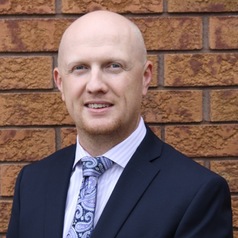International Rare Disease Day is upon us. People around the world spend Feb. 28 raising awareness about the impact that diseases with low prevalence have on patients and their families.
The day also marks the passing of yet another year during which the government of Canada has failed to adopt a national rare disease strategy. This is particularly striking for a country with a robust public health-care system.
Everything about rare diseases is compelling; from their human impact to the genetic science that underpins most of them and the potential they hold for helping us gain a better understanding of more common diseases.
Despite this, rare diseases continue to be brushed aside by most politicians. Why is this? Could it finally be time for us to stop calling them “rare?”
Not so rare
Many countries have adopted definitions for rare diseases based on their prevalence within a population. These thresholds generally vary between countries and between patient populations.
There is currently no international consensus about the number of rare diseases, but advocacy groups claim there are more than 7,000. Scientists estimate that roughly 80 per cent of these are genetic in origin, and the World Health Organization estimated in 2013 that one of every 15 people worldwide are impacted by a rare disease — or approximately 400 million people in 2013.
Wide-ranging benefits
Unlike more common diseases, rare diseases generally do not benefit from economies of scale. Regardless, there is a great deal of interesting research being done into these diseases.
Breakthroughs in science such as the development of next-generation sequencing and genome editing tools like CRISPR-Cas9 are paving the way toward a greater understanding of the genetic tapestry underlying several rare diseases (for example, Duchenne Muscular Dystrophy and NGLY1-deficiency).
Recent studies even suggest that a better understanding of NGLY1-deficiency may help us to develop therapies for multiple myeloma and other devastating cancers for which treatment options have been limited.
Research into undiagnosed genetic diseases is also starting to benefit from advancements in artificial intelligence and machine learning.
‘Political won’t’
The number of people with any particular rare disease in Canada is very low. Consequently, most disease-specific advocacy groups are relatively small in size. There are currently only two national advocacy groups in Canada, CORD (Canadian Organization for Rare Disorders) and RDF (Rare Disease Foundation), that broadly advocate for all rare disease patient populations.
In contrast to the WHO, both the Rare Disease Foundation and CORD estimate that one in 12 Canadians have a rare disease. To date, however, no official definition for “rare disease” has been adopted by the government of Canada.
This could be because there has not been enough research into these numbers, but it could also be because some of our country’s leading experts disagree about the number of impacted individuals. Joel Lexchin, a York University professor emeritus, testified before a House of Commons committee that the one in 12 number is “unreliable.” And Dr. Alex MacKenzie, a celebrated pediatric endocrinologist at the Children’s Hospital of Eastern Ontario, thinks the number is “a bit inflated.”
Given the disagreement about even a definitional starting point, it’s unsurprising that no Canadian province or territory has implemented a comprehensive plan for rare diseases, like the one put forth by CORD in 2015.
Ontario came close to putting a plan in place, but it lost steam after the 2018 election of Doug Ford as premier. The final report of Ontario’s Working Group on Rare Disease (which includes 19 recommendations) now sits abandoned on a website under the dismissive header: “This document was published under a previous government.”
‘Kiss of death’
Health Canada did publish a draft framework for rare disease drug approval on its website in 2012, but it was removed in 2017 in what CORD President Durhane Wong-Rieger described as the “kiss of death for the orphan drug framework.” An “accelerated review pathway” has since been adopted (although it is not dedicated specifically to rare diseases) in order to help facilitate the approval of drugs for rare disease.
Small patient groups can sometimes get the attention of policy-makers, but the victories are usually narrow in scope and in geographic reach. The opening of a clinic in Toronto for people living with Ehlers-Danlos Syndrome is a good example.
For some reason, rare diseases have generally not been treated as very important to Canadian policy-makers, despite our public health-care system and the federal government’s ability to use transfer payments to guide health-care delivery in the provinces.
Despite the fact that there is strength in numbers, it appears to be the case that rare diseases suffer from a branding problem in this country. Focusing on their low prevalence seems to give politicians, who like popular causes that can activate more voters, with an easy excuse to ignore the needs of these populations.
So is it time to abandon the word “rare” and try something new?



 St John’s wort: six drug interactions you should know about
St John’s wort: six drug interactions you should know about  Ethereum Rockets Ahead: Whale Activity, ETF Inflows, and World Liberty Financial's Bold Investment Drive Market Optimism
Ethereum Rockets Ahead: Whale Activity, ETF Inflows, and World Liberty Financial's Bold Investment Drive Market Optimism  FxWirePro- Gold Trade Idea
FxWirePro- Gold Trade Idea  FxWirepro -Gold Trade Idea
FxWirepro -Gold Trade Idea  To the Moon: Bitcoin Aiming for $200,000 as Whale Activity and Inflows Surge
To the Moon: Bitcoin Aiming for $200,000 as Whale Activity and Inflows Surge  Why bovine colostrum supplements could be a health gamble
Why bovine colostrum supplements could be a health gamble  Ondo Finance Surges as Major Investments and Whale Activity Ignite Market Confidence
Ondo Finance Surges as Major Investments and Whale Activity Ignite Market Confidence  Heading on an overseas holiday? The Australian dollar tumbled this week – but that’s not bad news for everyone
Heading on an overseas holiday? The Australian dollar tumbled this week – but that’s not bad news for everyone  Exercise boosts memory for up to 24 hours after a workout – new research
Exercise boosts memory for up to 24 hours after a workout – new research  Port St. Lucie's 'Fluoride Halt' Sparks Controversy Over 'Public Health Risks and Water Safety'
Port St. Lucie's 'Fluoride Halt' Sparks Controversy Over 'Public Health Risks and Water Safety'  Are seed oils really as harmful as Robert F. Kennedy Jr. claims?
Are seed oils really as harmful as Robert F. Kennedy Jr. claims?  ‘A Shocking Divide!’ COVID Vaccine Poll Shows Republicans Say ‘No Way’ While Democrats Roll Up Sleeves
‘A Shocking Divide!’ COVID Vaccine Poll Shows Republicans Say ‘No Way’ While Democrats Roll Up Sleeves 


































